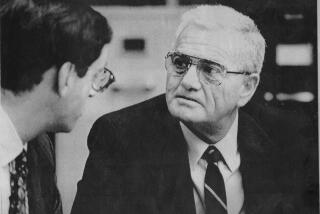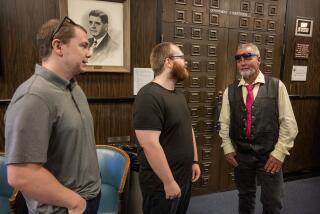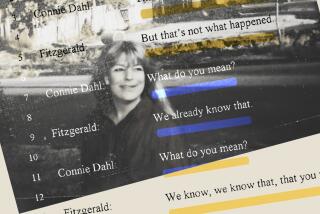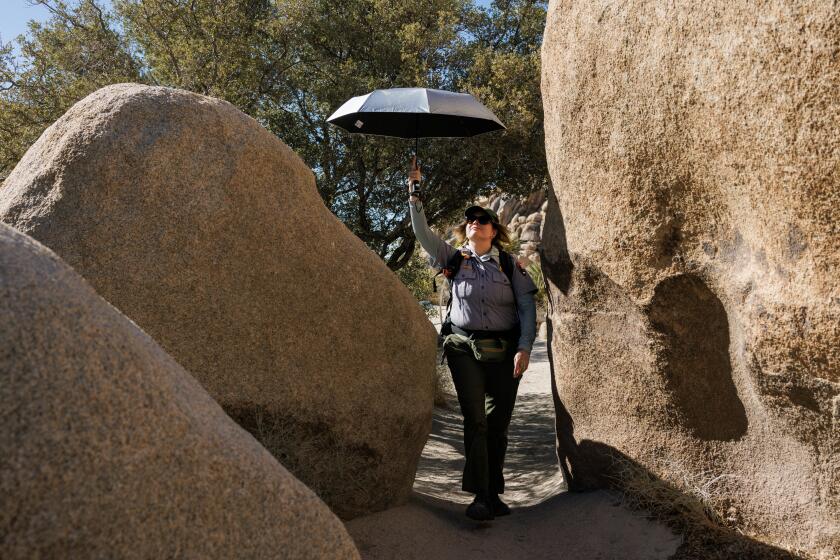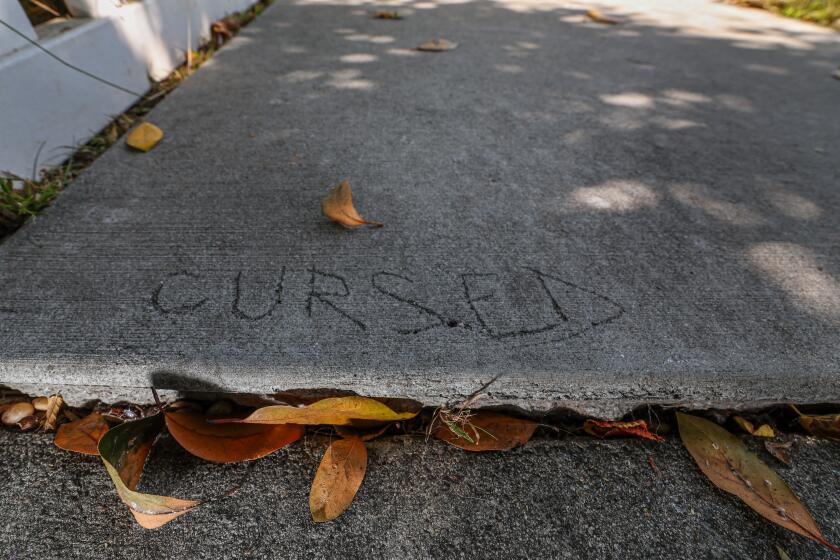Parts of Yosemite Killer’s Confession Made Public
Hours after his arrest in the slaying of a Yosemite naturalist last year, Cary Stayner told authorities that he never intended to kill the woman and did not feel good about her murder, even though he initially considered keeping her decapitated head as a trophy.
A portion of Stayner’s lengthy interrogation by an FBI agent after the July 1999 murder of Joie Ruth Armstrong, 26, was ordered released Monday by a federal appeals court.
Stayner, who pleaded guilty Nov. 30 to the murder of Armstrong, awaits trial in the February 1999 killings of three Yosemite sightseers, a crime that whipped up a firestorm of national attention.
Media groups fought for months to unseal documents that included a government interrogation of Stayner and a brief outlining why prosecutors planned to seek a death sentence.
Stayner’s attorneys fought to keep the confession sealed to protect him from prejudicial publicity before a trial in Armstrong’s slaying. After his guilty plea, the documents were ordered unsealed.
But with a trial yet to come in the slaying of three Yosemite sightseers, Stayner’s Santa Monica lawyer, Marcia Morrissey, objected that the documents could sway a potential jury. Her appeal failed to persuade the U.S. 9th Circuit Court of Appeals in San Francisco.
The documents lay out graphic details of Stayner’s account of how he carried out the killing and, for the first time, give a glimpse of his state of mind during the crime.
Stayner confronted Armstrong at gunpoint at her cabin on the western edge of Yosemite, then bound her mouth and hands with duct tape, according to the prosecution’s court brief. He forced her into his sport utility vehicle, intending to rape her, but she dived out an open window and ran off.
The 39-year-old motel handyman chased her down in the woods and tackled her, prosecutors said.
In a taped confession to FBI Special Agent Jeffrey Rinek, Stayner described cutting Armstrong’s throat and later decapitating her with a knife. He called the killing a “compulsive act that happened all of a sudden” after he “lost control” of himself “and lost control of her.”
At one point, Stayner said, he considered keeping the head, thinking that “it would have been a trophy, most likely.”
But ultimately Stayner threw it, along with the body, into a creek.
“I didn’t feel good about it,” Stayner said in the transcript, adding that “it’s like I’m a split personality. I don’t black out and do things, you know. . . . I know what’s wrong, what’s right.”
“You knew it was wrong what you were doing?” Rinek asked.
Stayner replied: “Most definitely.”
More to Read
Sign up for Essential California
The most important California stories and recommendations in your inbox every morning.
You may occasionally receive promotional content from the Los Angeles Times.
